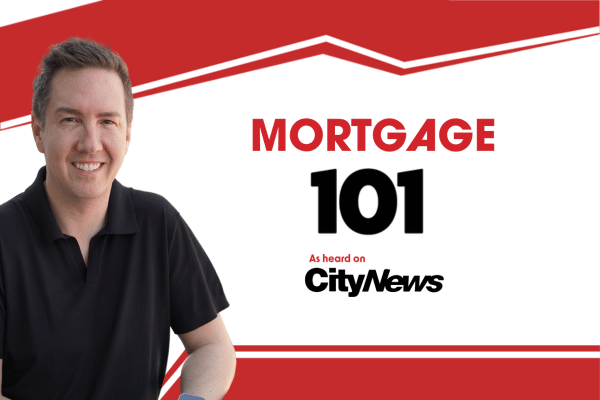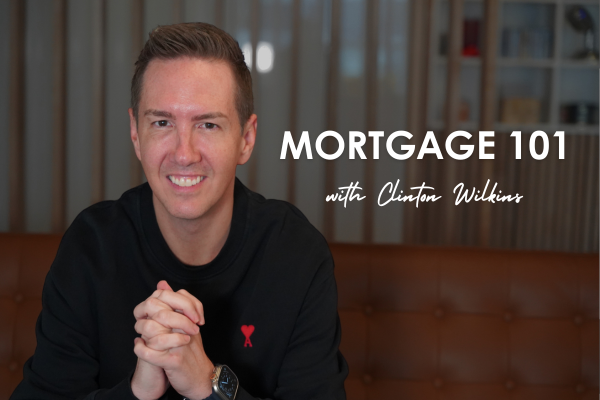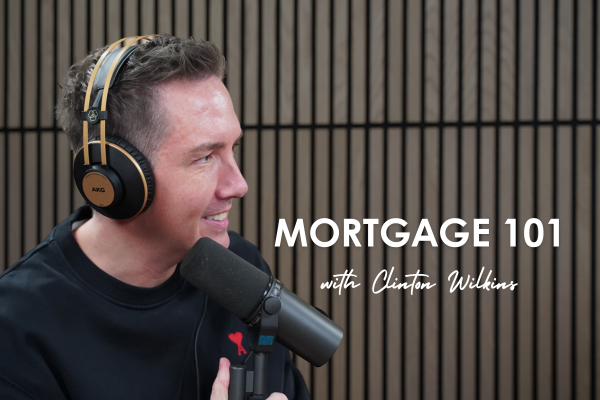Todd Veinotte and Clinton Wilkins discuss the evolving landscape of mortgage lending, highlighting its complexities and the importance of staying informed.

Mortgage 101 – Bank of Canada’s Interest Rate Cuts
Clinton and Todd dive deeper into the Bank of Canada’s decision to reduce the key overnight rate by 25 basis points. The two discuss how this affects mortgage rates and how it inspires confidence in the real estate market.
Todd Veinotte
All right. Welcome back to Mortgage 101, your guide to homeownership with Clinton Wilkins and myself, Todd Veinotte!
So without further ado, you’d probably rattled my cage, if I didn’t talk with the Bank of Canada, we’re going to talk about the Bank of Canada!
Clinton Wilkins
I wouldn’t be the only one rattling your cage, I think probably people would start picketing the City News studios to be like, ‘we just need more Bank Canada content!’
Todd Veinotte
So for anybody who doesn’t know what the the recent announcement was from the Bank of Canada, last week, Clinton, let everybody know what happened.
Clinton Wilkins
The Bank of Canada reduced the key rate by 25 basis points, it was the first cut since 2020, which is huge! And it’s just signaling a lot of confidence. You know, really in the real estate market. For Canadians, the part of the reason that the bank can cut this key overnight rate is inflation, certainly going in the right direction, which is awesome. And, you know, leading up to the bank announcement, the GDP was very soft, it didn’t even meet the target. So, it was really pointing in the direction that we were going to have a cut. And many economists and even some, like Scotiabank; they’re predicting at least three more cuts this year! This will mean in theory, if it’s 25 basis points cut, we’re gonna see the primary be 1% less at the end of the year than it was at the beginning of the year, which is great news, for those of you that are in a variable rate mortgage, have a home equity line of credit, or have any debt that is tied to the prime rate, you’re going to see your cost of borrowing, be less. And if you have a variable mortgage that has an adjustable payment, you’re gonna see your payment be less as well. So great news, I think it’s gonna be a lot of confidence. But you know, there could be some implications to a lower rate.
Todd Veinotte
Okay, we’d like to educate! As we have alluded to, earlier in the show. So the point of the Bank of Canada, and why they lower or raise rates is tied in with inflation.
Clinton Wilkins
Basically, it’s basically inflation. The Bank of Canada is a bias bank, and they’re always biased to being more conservative than being more liberal. And in what I’m saying, by being more conservative, is they would always err on the side of caution. So they are trying to drive inflation down. They let these rate increases go too slow, or didn’t start early enough. And inflation was like a runaway train that left the station, and so they had to increase, increase, increase, really over the last 18 months or so to drive inflation down. And now inflation is going in the right direction. We want inflation to continue lower and continue to stay low. And that’s the one thing that the Bank of Canada is going to continue to watch. The thing that we need to remember is the changes that the Bank of Canada does, it doesn’t take effect right away. So, some of the changes that they’ve done, it’s take sometimes 3,6,9 months to take effect. So even with the rates being reduced, it’s going to take several months to really become more stimulative to the economy or to the Canadian consumer. The one thing that we really need to watch out on is Canadians need to continue not spending, and they need to continue, keeping their consumer debt not increasing. And that’s the one thing that the Bank of Canada will be really watching. They want to make sure that when these rates go down, you know, Canadians don’t suddenly go out and take on a lot more debt.
Todd Veinotte
I don’t think that’s gonna happen with a point two, five basis.
Clinton Wilkins
I don’t think so. But again, this is a psychological change by point two, five of a reduction that’s like 3%. 3% is not a lot of a percentage to maybe move the needle. But it’s more perception, I think, to the consumer, and the rates are going to continue to soften. That’s what they’re projecting. The bank economists are coming out, and economists at large are saying that the rates are going to continue to to reduce, and it’s really changed the conversation that us as mortgage professionals are having with our customers. The shift has really been that more and more variable rates have been requested. Our advice has been more variable rate mortgages. If we were having this conversation three months ago, I can tell you three year fixed was the most popular. I took part in a survey that Bell Media did with CTV and they surveyed mortgage brokers across this country. And you know, the majority are still recommending a three year fixed. And I think that advice probably has shifted as of last Wednesday, and I think we’re going to continue seeing that shift, for the rest of the year. The reason that a lot of consumers decided to take the fixed rate, Todd, and why the three year was so popular, is it was much lower than the variable. But there are implications to taking a fixed rate. Sometimes we think fixed is safer. Well, if you break your mortgage early, the fixed certainly can have a much larger penalty, especially if those rates go down. And you just don’t have that flexibility. The nice thing with the variable is, when the primary goes down, your cost of borrowing is going to go down. If you have an adjustable payment, your payment will go down. Or if you have a fixed payment, your amortization will get shorter. The other nice thing with the variable, if you have need to break the mortgage early, it’s only a penalty of three months interest. So that’s really very flexible. And you can always convert your variable into a fixed rate. So that’s why a lot more consumers are deciding to take the variable right now.
Todd Veinotte
For sure. And again, new the debate over the variable, the fixed and on and on it goes you’ve been pretty consistently on the variable trend, right? This is something since I’ve known you, since we’ve been doing the show, you stand by.
Clinton Wilkins
I’m more concerned with people coming out of these Uber low fixed rates, and even going into a fixed rate at double what they had.
Todd Veinotte
Right! As opposed to somebody with a variable, they’re gonna keep trucking along and you’re used to what you’re paying.
Clinton Wilkins
Yeah, let me tell you, my customers that are in a variable, some have converted. That’s reality, it doesn’t matter where the rate is, people will still convert, because you know that this is like human nature. But 60% of Canadians would take a five year fixed, that is the most common rate. Up untill maybe the last couple years, the conversation has shifted, variable has always been less than fixed. But we’ve really turned the things upside down, the world’s been turned upside down. And variable rate now is more expensive still today than a fixed rate will be. But I can tell you by the end of this year, I suspect the variable will be lower.
Todd Veinotte
Alright, so what’s with the five year fixed rate now being offered?
Clinton Wilkins
You know, a good five year fixed is sub 5%. So let’s call it like 4.
Todd Veinotte
And the variable right now is what?
Clinton Wilkins
A good variable, somewhere around 6%.
Todd Veinotte
Okay six
Clinton Wilkins
We’re talking like a 1% in a change.
Todd Veinotte
So but as the Bank of Canada interest rates go, it will likely go under that five year fixed within a couple of years?
Clinton Wilkins
A couple of years, maybe even a couple of months. I think maybe even by the end of the year, we’re gonna see the prime rate even be 75 basis points or less. So then we’re getting, a prime rate you know, in that 6% range, we’ll call it. And then if you have a mortgage prime minus 100, you’re down in that.
Todd Veinotte
Is there anything that could really rock the Bank of Canada to spike rates again?
Clinton Wilkins
There definitely is yeah, and that’s why I think consumers need to be educated. Yes, I think the backhand is going to continue to reduce, I think we’re gonna see rates 2% less than we do right now. And in basically a year and a half’s time, by the end of next year, I think we’re gonna see the rates 2% less things that can impact that. Inflation, let’s say inflation goes back up. Guess what, Bank of Canada’s gonna pump those brakes on those rate reductions. The other thing is, if we see things like what happened with Ukraine, if we see something like like a world event that’s going to be outside of our control, you know, that may impact inflation that might impact the decision that the Bank of Canada makes. Sorry to say that I’m really watching the US. The US prior to the Bank of Canada announcement, they did a hold, Canada’s usually not a first mover, Canada’s not usually the one that will go and decide, okay, we’re going to increase, we’re going to decrease, you know, even internationally, they kind of look and see what’s going on with the rest of the world. Obviously, they’re looking at what’s going on at home. But they’re really looking at more of a broad spectrum, after the Bank of Canada reduces the rates. In the European situation, they’ve started to reduce as well. So it’s going to be very, very interesting. There certainly has been some news in the bond market even this week. And a lot of consumers are asking me now that the Bank of Canada reduced the key overnight rate, are fixed rates going lower. They’re not lower today, but there certainly has been some activity in the bond market. And the fixed rates are tied to what’s going on in the bond market. So you know, those rates go down, we’re gonna start seeing lower fixed rates. Obviously, we’re going to continue to watch what’s going on the bond market. Fixed rates aren’t lower today, but we’re gonna continue watching. Soon, we’re gonna talk about obviously the rest of the Spring market, and summer is right around the corner, and this market I feel is dead. It’s been different than it has been before and we’re certainly going to talk more about really what’s going on with consumers and what is the best kind of direction for them going forward into the summer.
Todd Veinotte
Okay Mortgage 101, your guide to homeownership!


